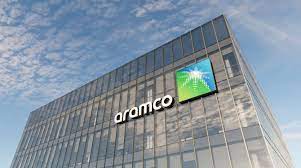Saudi Arabia’s oil giant Aramco looks caught between a rock and a hard place. It seeks to win over new investors, especially foreign ones, while at the same time – as the world’s top crude oil exporter and the biggest OPEC producer – not allowing oil prices to crash.
Aramco has just priced its secondary share offering at the lower end of the previously set range, in a sign that it is now focused on winning over international investors.
But as the most influential member of OPEC, Saudi Arabia – which controls 97.62% of the oil giant either directly or via the sovereign wealth fund – seeks to keep oil prices stable and in a relatively high range in the $80s per barrel. This means that Saudi Aramco needs to follow government orders and pump as much oil as the Kingdom says.
A conflict between rewarding shareholders and keeping oil prices elevated arises, Avi Salzman at Barron’s argues.
On Friday, Aramco priced 1.545 billion shares on offer in its latest share sale at $7.27 (27.25 Saudi riyals) apiece, based on the results of the bookbuilding process.
That’s a discount of 6% compared to the closing price of Aramco’s shares on the Saudi stock exchange, Tadawul, on the day before the secondary offering was announced at the end of May.
Saudi Aramco’s top executives faced a “hard sell” to win over international investors in the giant’s new share offering due to concerns about the future of oil and the oil industry, sources familiar with the company’s efforts to place more shares with foreign investors told the Financial Times.
It looks like the secondary offering was more successful in attracting foreign shareholders than the IPO of 2019, which went mostly to domestic investors.
With the offer priced at the lower end of the range, Saudi Arabia will be raising $11.2 billion, which will be funneled into the ambitious projects of Saudi Crown Prince Mohammed bin Salman to diversify the economy from oil.
The orders for the new shares in Aramco exceeded $60 billion, while 60% of the newly allotted stock is set to go to international investors, sources involved in the share sale told FT.
Demand from foreign investors is being carefully gauged by market analysts to see if the Saudi oil giant has managed to draw interest from abroad this time, after the few enthusiastic foreign investors during the IPO in 2019.
Aramco’s massive dividend could be attractive for foreign investors despite the lack of share buybacks at the world’s largest oil company and top crude exporter, Bloomberg notes.
Aramco’s dividend yield is estimated at 6.6% for 2024, one of the highest compared with the international supermajors, according to Bloomberg Intelligence. Aramco and Eni’s dividend yields for 2024 are the highest, at 6.6%, followed by BP’s 4.7%, TotalEnergies’ 4.6%, and Shell’s 3.9% dividend yield.
ExxonMobil’s dividend yield is 3.37%–half of Aramco’s.
Yet, despite greater foreign interest in the Saudi oil giant’s secondary share offering, many investors are wary of the fact that Aramco’s oil production levels are not driven by the market. The Kingdom, being the top OPEC producer, the world’s largest crude oil exporter, and a shareholder of more than 97% in Aramco, decides how much oil the company should produce.
That’s because Saudi Arabia leads the OPEC and OPEC+ efforts to “stabilize the oil market,” i.e., keeping prices relatively higher so these producers can haul in generous oil revenues for their governments.
Even a hint of OPEC+ easing some of the current oil production cuts this year sent Brent prices tumbling below $80 per barrel last week, highlighting Saudi Aramco’s dilemma of balancing investor needs against “stable” oil prices.

 Iran Energy News Oil, Gas, Petrochemical and Energy Field Specialized Channel
Iran Energy News Oil, Gas, Petrochemical and Energy Field Specialized Channel



